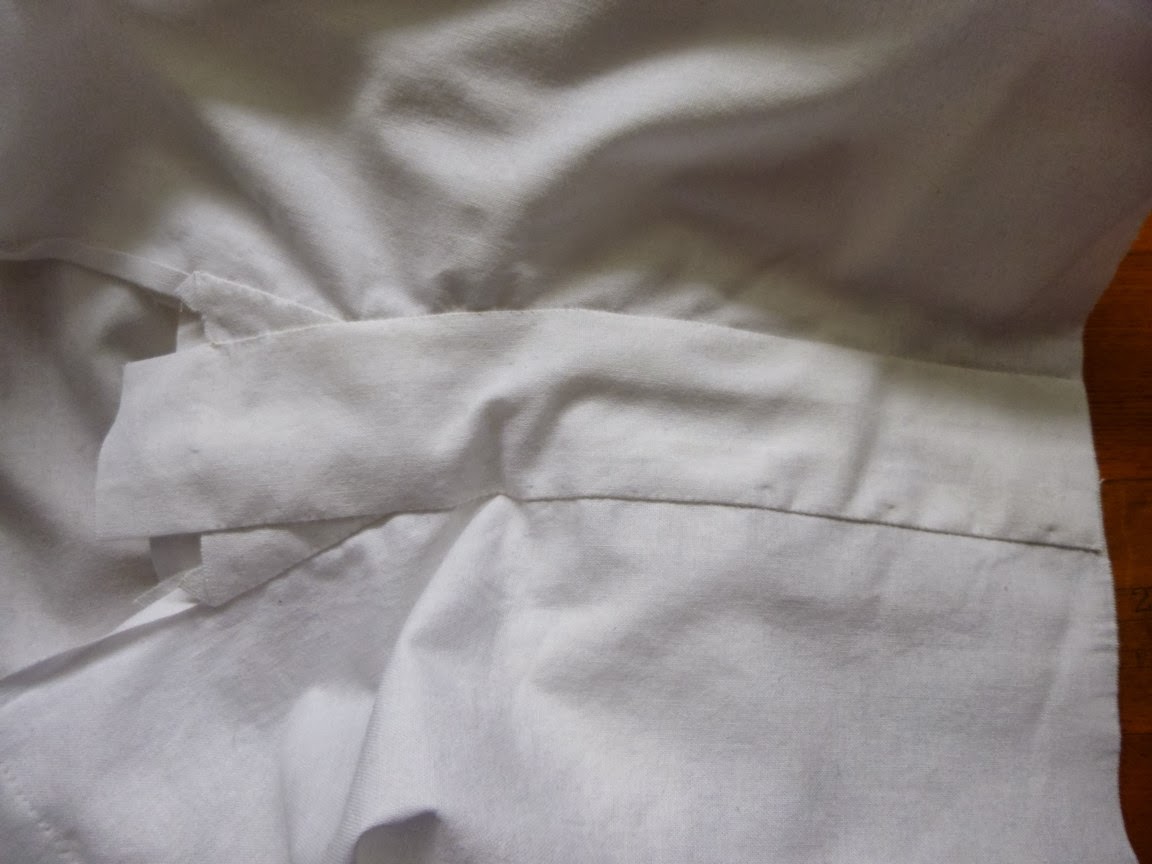The pattern is based on this one.
 |
| Young Officer in a Zebra Coat, calling someone to give an account of his services. Galerie des Modes, 1789. (source) |
 |
| Man's suit, c. 1790- 95. Bunka Gakuen. |
It has the same seams, as well as the large rectangular pockets placed very far back.
My pattern is roughly based on a couple of the ones from The Cut of Men's Clothes: 1600-1900.
I started by tracing around one of my waistcoat patterns. I moved the side seams further back, took a few measurements, and drew the coat pattern around it.
I drafted the collar with the mandarin collar drafting method we learned in school. The sleeves are the sleeve pieces from my drawstring jacket, but widened a bit, and with a less pointed elbow. No sense in drafting a whole new shaped sleeve.
It worked better than I expected. The first mockup had a great many fit problems, but they were pretty easy to fix.
Here are three terrible pictures of the second mockup.
I was a bit concerned by the diagonal wrinkles on the sides and the puckers at the back of the sleeve caps, but I looked at some extant coats and they wrinkled in the exact same way.
 |
| The finished pattern. It doesn't stand out very well against the concrete floor. |
This denim is really nice because the dye actually goes all the way through, so it won't get pale spots when it wears.
The lining is linen. It was an icky brown when I got it, but I dyed some of it black. It came out dark grey, but that's fine.
 |
| The brown doesn't look too bad here, but it's a really icky shade in person. |
 |
| I folded the front edge up a bit higher, so it will hide the back edge. |
I pinned the lining pieces onto their corresponding outer pieces. Rather than use a running stitch, I sewed up the sides by machine, using regular thread.
Before turning them I marked the stitching lines with white basting on the denim layer only. Afterwards I marked those lines again with red basting, going through both layers. In this manner I kept the stitching line visible on the right side of the lining, which will be useful when I sew the sleeves on.
I whip stitched the sides of the sleeves together, stopping about 4 inches short of the cuff. This is because I haven't trimmed the cuff to length and I don't want to risk cutting through my stitching.
 |
| The sleeve seam from the outside. |
 |
| You can see that I will have to trim a fair amount off of the cuff. |
I can't wait until it's finished! I love the swallow tail shape of these coats.
If my stripey stockings look a little odd here, it's because I am wearing 2 layers of ripped tights over them.
I don't know if I will get much time to work on this over the next couple of weeks.
I have to do a challenge piece for the school fashion show. This year the challenge is rope. I have to make an outfit that is at least 80% rope on the outside by March 12th.
I have all the pieces cut out for my Fairytale challenge, but it is highly unlikely that they will be sewn together by the deadline.






































































